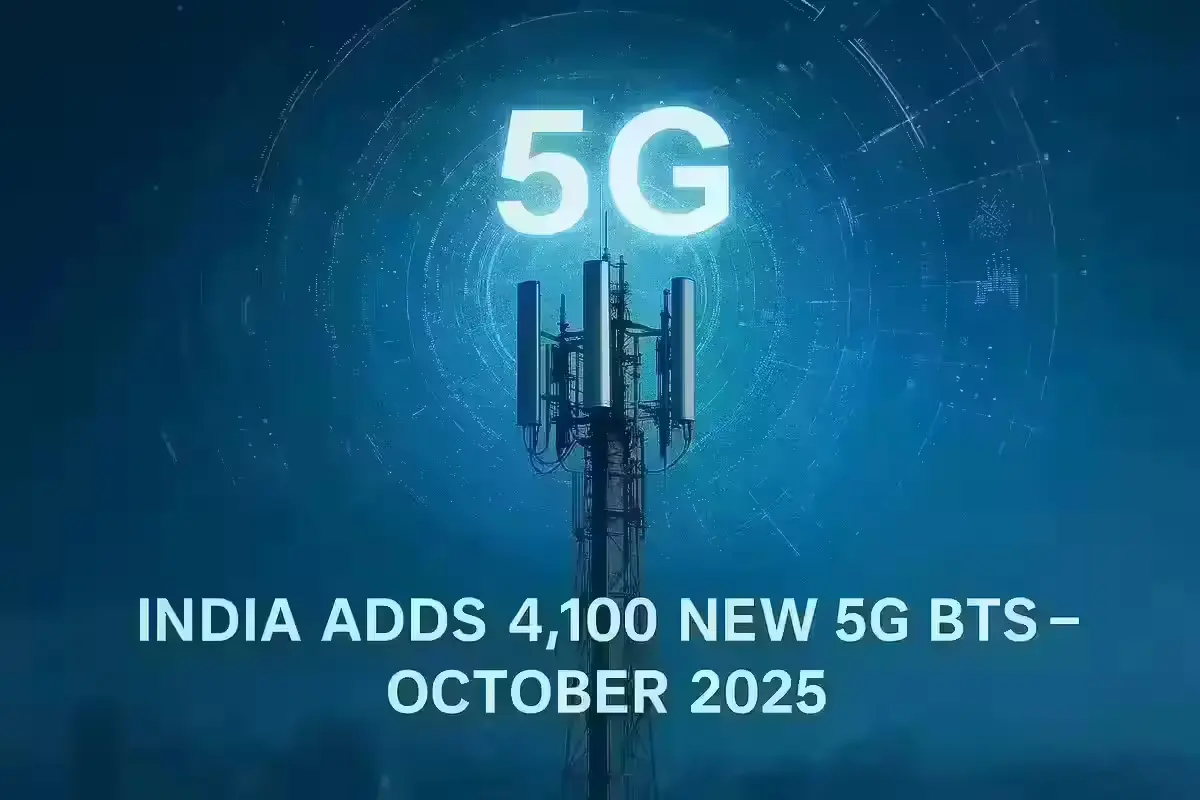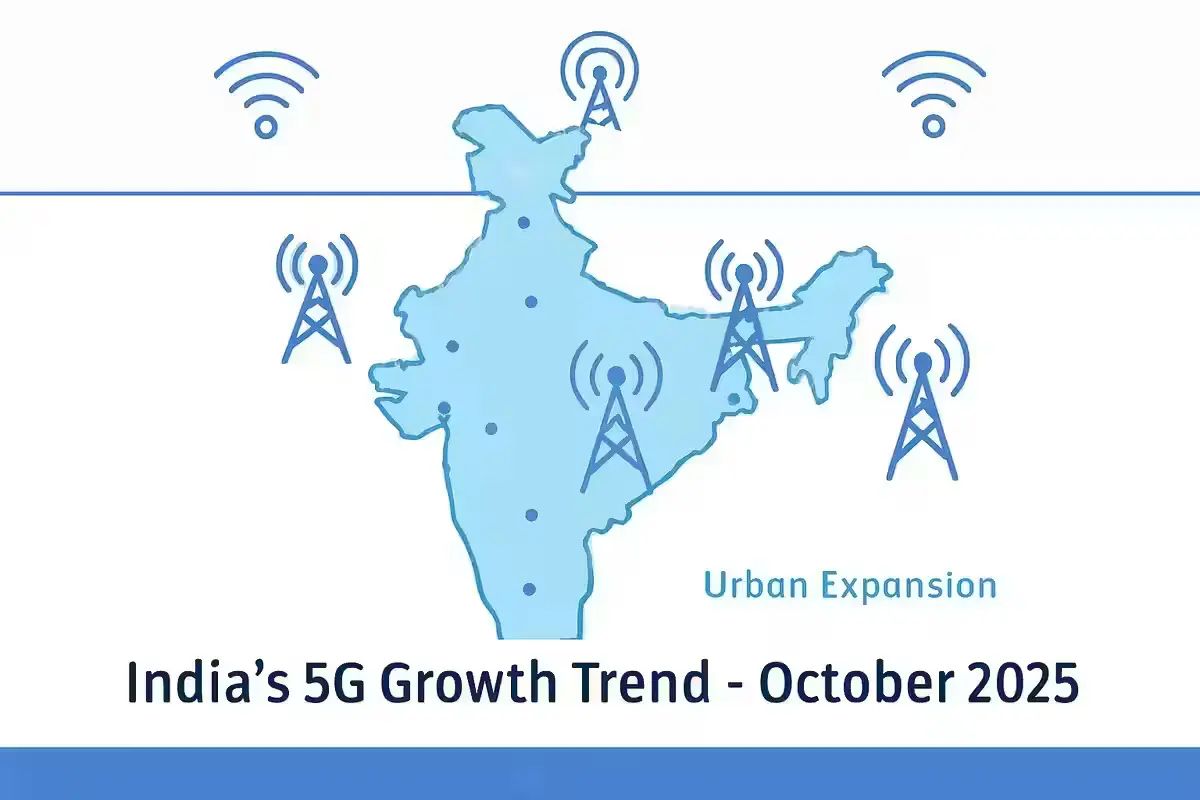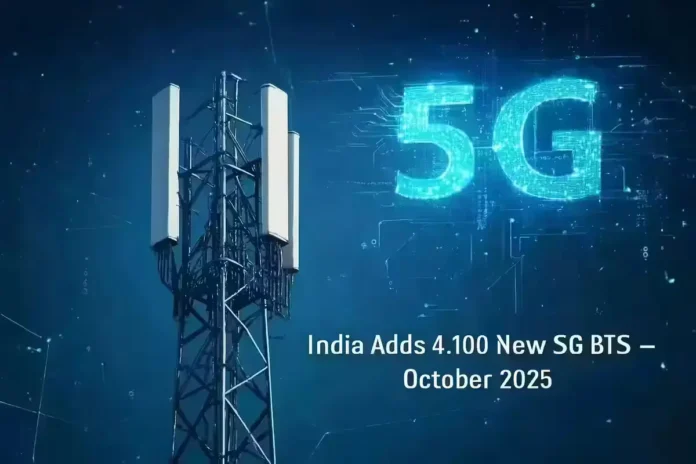India Adds Over 4,100 New 5G BTS in October 2025: The steady rollout highlights India’s ongoing push to expand next-generation connectivity, with BSNL and private operators boosting nationwide network coverage.
New 5G BTS in October 2025: India Strengthens Network Reach
India’s 5G growth story continues to accelerate. In October 2025 alone, the country added more than 4,100 new 5G Base Transceiver Stations (BTS). This expansion marks a major step toward improving nationwide connectivity and ensuring faster, more reliable mobile services for users across the country.
What the 5G BTS Expansion Means
Each new 5G BTS acts as a vital link between mobile devices and the broader network. With thousands of new units installed last month, telecom providers are bringing high-speed data access to regions that previously relied on 4G connectivity. The expansion supports India’s vision of building a seamless digital ecosystem that reaches both cities and rural communities.
BSNL Boosts Connectivity with 10,000 New 4G Sites

BSNL has also moved ahead with a plan to set up 10,000 new 4G sites across Delhi. These towers, launched under an operational model, will enhance data speeds and improve coverage in the capital. While the rollout primarily supports 4G, the infrastructure is designed to be upgradable to 5G, ensuring future-ready connectivity for users.
Design and AI Technology in Modern BTS Units
The latest 5G BTS installations use energy-efficient hardware and smart management tools. With AI-based network optimization, operators can predict high-traffic periods, balance data loads, and automatically adjust power usage. This results in stable speeds and lower operational costs — benefits that make 5G both faster and more sustainable.
Features and Technical Highlights
- AI-assisted monitoring for real-time network performance
- Lower latency for smooth video calls and online gaming
- Smart power control to reduce energy consumption
- Improved indoor and outdoor coverage in dense areas
- Scalable design to support future 6G evolution
Deployment and Pricing
Although the exact cost per 5G BTS installation varies, industry experts estimate that telecom operators are managing costs through shared infrastructure and OPEX partnerships. This approach allows for faster deployment and better utilization of resources, ensuring that users can access 5G services without a significant rise in tariffs.
User Experience and Feedback
Early users in areas where the new 5G BTS have gone live are noticing smoother browsing and quicker download speeds. Businesses that rely on IoT, cloud applications, and remote access tools are also reporting better consistency in connectivity. The wider coverage has begun to reduce network congestion in high-traffic regions.
Future Roadmap and Expected Expansion

The addition of over 4,100 new 5G BTS in October 2025 is only part of a much larger plan. The Department of Telecommunications aims to extend coverage deeper into tier-2 and tier-3 cities throughout 2026. BSNL’s 4G tower rollout in Delhi will also serve as the backbone for future 5G upgrades, keeping pace with private operators and supporting India’s digital ambitions.
Disclaimer
The details provided in this article are based on official updates and publicly available information as of November 2025. Technical and rollout data may evolve as operators release new updates.
FAQs
What is a 5G BTS?
A 5G Base Transceiver Station (BTS) connects user devices to the 5G network, managing data signals and providing high-speed communication.
How many new 5G BTS were added in October 2025?
India added over 4,100 new 5G BTS in October 2025, improving mobile network reach across urban and semi-urban areas.
What is BSNL doing to improve connectivity?
BSNL is setting up 10,000 new 4G towers in Delhi, which will also be capable of future 5G upgrades, enhancing both coverage and reliability.
When will full 5G coverage be available across India?
Most metro areas already have 5G access. Nationwide coverage, including rural regions, is expected by mid-2026.

